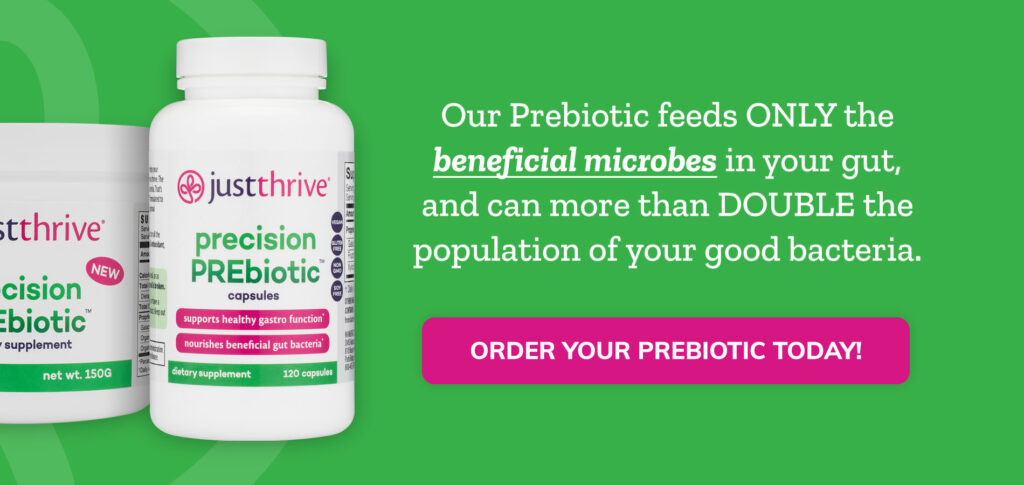Table of Contents[Hide][Show]
- Soluble vs. Insoluble Fiber
How Does Fiber Help Your Body?+−
- Fiber Feeds Your Gut Bacteria
- Fiber Smooths Blood Sugar Curves
- Fiber = Absolutely No Nasty Stony Surprises
- Fiber Facilitates Fantastic Hemorrhoid Management
- Fiber Encourages Glowing Skin
- Fiber Brings a Smile When You Jump on the Scales
- 9 Foods To Help Get Rid Of A Muffin Top
- Fiber Helps with Cancer Prevention
- How to Add More Fiber into Your Diet
Aside from commercials featuring grandparents and their preferred fibrous cereal brands, fiber isn’t something most people think about too often. Despite its importance, it flies under the radar in most American diets.
However, since our dietary fiber intake should include roughly 20 to 35 grams of fiber daily, and it pretty much facilitates the ease of bowel movements and the second two phases of digestion, we think it’s pretty important.
For instance, did you know that consuming enough of the right type of fiber at the right times may reduce the risk of gallstones and kidney stones, a heart attack, cancer, hemorrhoids and obesity?
The key is to do fiber right. Because, if you consume too much, have GI sensitivities, or are looking at whole grains to supply you with your daily requirements, things could go south quickly. Plus you could miss out on all of the benefits of dietary fiber.
So what’s the best way to add fiber to your diet? And what are some of its biggest health benefits? Let’s take a look!
Eight Fast Facts About Fiber
Before we get into the brawny benefits of a high-fiber diet, let’s break down fiber with some fast facts.
Fact 1:
It is a non-digestible, plant-based carbohydrate. It actually has almost no caloric value. And unlike other carbs, which get broken down into sugar molecules, fiber can’t be broken down. So it passes through the digestive tract basically untouched. (This is a GOOD thing – more on that below.)
Fact 2:
There are two types of fiber: soluble and insoluble. The only difference is that soluble fiber can dissolve in water, while insoluble fiber cannot. They are equally important to your gut!
Fact 3:
Since it cannot dissolve in water, insoluble fiber acts like a sponge and can soak up 15 times its weight in water. The effect? You feel full for longer! It also is responsible for making the body’s waste heavier and easier to pass. It does this by attaching itself to the waste, helping to prevent constipation, hemorrhoids, heart disease, and several cancers.
Fact 4:
Soluble fiber removes cholesterol from the bloodstream by binding with it and taking the cholesterol with it on its journey through and out of your body! This helps to significantly lower cholesterol levels and promote reduced risk of heart problems.
Besides lowering blood cholesterol, soluble fiber also helps those with type 2 diabetes by helping control blood sugar levels.
Fact 5:
Food must have 3 grams of fiber per serving to be considered a “good” source of fiber. It must have 5 grams per serving to be considered “excellent.”
Fact 6:
The higher your fiber intake, the faster food moves through the body and exits as waste. For example, in many third-world countries, where fiber content is very high, it only takes 1.5 days for food to move through the body, as opposed to 3 days on average in most first-world countries.
Fact 7:
Because fiber takes longer to chew, it can help with overeating issues. You see, it takes the gut about 20 minutes from getting full to realize it’s full. The slower you eat, the slower you digest, and the less you’ll have eaten by the time the signal gets to your brain that you’ve eaten enough!
In fact, increasing your fiber intake by 14 grams a day can result in an up to 10% caloric decrease.
Fact 8:
As you increase your fiber intake, you should also increase your water intake. The more water you drink, the more easily you can move fiber through your digestive tract.
But be careful! There is such a thing as too much fiber—going over 50 grams per day can cause diarrhea, bloating, and issues absorbing minerals.
Soluble vs. Insoluble Fiber
Let’s circle back to the important distinction between soluble versus insoluble fiber.
As a refresher:
- Soluble fibers dissolve in water; insoluble fiber doesn’t.
- Soluble fiber attaches to cholesterol and moves it out of your system.
- Insoluble fiber keeps you feeling full longer and makes it easier for your body to pass waste.
These two types of fiber perform very different tasks, so it’s important that you get adequate amounts of each.
When you want to increase your soluble fiber intake, you’ll want to eat:
- Oats, oat bran, dried beans, peas, strawberries, apples, potatoes, citrus, prunes, lentils, and barley.
When you want to increase your insoluble fiber intake, you’ll want to eat:
- Fruit with skins, raw vegetables (especially artichokes), nuts, wheat bran, brown rice , legumes, and whole-grains (like barley, quinoa, and wild rice)
How Does Fiber Help Your Body?
With the emphasis placed on the link between fiber and digestion, it’s understandable if you think that’s all fiber does for you. But its benefits go far beyond your digestive tract!
Fiber Feeds Your Gut Bacteria
Believe it or not, there are trillions of microorganisms – some good, some bad – living in your gut, and they play a huge role in your digestive, immune, and even your emotional health! Just like you need food to power your energy, your gut bacteria require food to perform their crucial bodily duties. And their preferred source of food? Fiber.
In particular, your gut bacteria like specific types of plant fibers called prebiotics. Prebiotics can be found in common foods like apples, bananas, onions and garlic, or as a supplement. (See here for our recommended prebiotic supplement.)
As we mentioned previously, fiber doesn’t get broken down by your digestive system. Instead, it passes through your stomach intact where it gets eaten up by your good gut bugs. So the more fiber you eat, the more your good gut bugs flourish!
Fiber Smooths Blood Sugar Curves
Whether you’re looking to soften the blow of blood sugar spikes and crashes—or you suffer from a condition like diabetes that affects your blood glucose—dietary fiber is your ally.
Studies show that the fiber acts like a cushion in your digestive system, slowing down how fast sugar is absorbed into your bloodstream, and lessening the load for your pancreas. In fact, blood sugar control is one of the known benefits of psyllium fiber.
What does that mean for you? More constant and higher energy levels, with fewer energy extremes.
Want to know the added surprise benefit? Fiber also slows down the digestion of fat, so it can really help you with weight loss and body mass maintenance, too.
Fiber = Absolutely No Nasty Stony Surprises
Gallstones and kidney stones aren’t something that crosses your mind very often until you have them (ouch) or you watch someone being rushed into hospital with either of these problems.
If it’s not you, you’ll be biting your lip as you watch them rolling around in pain.
And if you’ve experienced this, you’re likely nodding your head right now.
There’s almost nothing more painful. Many agree that fiber is worth incorporating into your diet just to avoid this painful possibility!
Studies show that fiber may protect against gallstone formation by speeding up intestinal transit and reducing the production of the acids that have been associated with stone formation.
And it is thought to prevent kidney stones, thanks to the same transit-quickening reasons.
Fiber Facilitates Fantastic Hemorrhoid Management
Hemorrhoids are mighty common: 75% of all people in the U.S. have them!
Painful times in the bathroom, blood appearing in your stool, and itchy irritation is no fun. Thankfully, dietary fiber can really help.
Fiber reduced the risk of bleeding by 50% in the study group that was given fiber across seven trials.
Those who consumed the fiber saw consistent results over time. So adding more fiber into your diet is worth making a habit!
Fiber Encourages Glowing Skin
Did you know that acne and rashes can be caused by yeast and fungus being excreted through your skin? Kind of gross, right?
The good news is that fiber (especially fiber like psyllium husk and the magic combination we mention below) can really help move those nasties out of your body lickety-split.
Once those impurities and toxins have been reduced and eliminated, you’ll love the result: healthier, more youthful-looking skin.
Fiber Brings a Smile When You Jump on the Scales
For most people, weight control is a real challenge.
You might have tried a million different diets or logged hours at the gym. Yet, it’s still hard to stop yourself from eating the wrong things—falling off the wagon with (almost) a sigh of relief. It’s hard!
But adding fiber could make healthy eating much easier. Fiber fills you up, giving you the feeling of a full belly even when you’re eating smaller portions. That satiety makes it easy to cut back on the snacks you used to need to keep a rumbling belly at bay.
Epidemiological studies also show fiber intake is associated with a lower body weight. In fact, weight loss and maintenance is actually one of the benefits of acacia fiber (also known as acacia gum or gum arabic). Studies show that females who ingested acacia fiber for six weeks significantly reduced their BMI and lowered their body fat by over 2%!
Related
9 Foods To Help Get Rid Of A Muffin Top
Do you want to know how to get rid of your muffin top? Start with these nine delicious and nutritious foods for a smaller waistline and a flatter belly!
Fiber Helps with Cancer Prevention
It is thought that fiber helps protect against colorectal cancer/colon cancer—thanks to a substance called butyrate, produced by the bacteria that breaks down fiber in the lower intestine.
The theory behind this is that butyrate may inhibit the growth of tumors of the colon and rectum.
Magic.
And you don’t even have to do anything apart from eat tasty, fiber-rich foods (more on that very soon).
A large-scale study also showed that women who eat more high-fiber foods during the adolescent and young adult periods may have a significantly lower risk of getting breast cancer than those that eat less fiber.
How to Add More Fiber into Your Diet
If you’re trying to increase the amount of fiber in your diet (as you should) here are a few highly effective hacks:
- Eat the vegetables on your plate FIRST
- Always choose whole grain products over refined grains whenever possible
- Get lots of seeds and nuts in your diet
- Be sure to eat plenty of beans. Black beans and kidney beans are particularly rich in fiber.
- Add diversity to your diet with berries (especially raspberries, blackberries, and blueberries) and legumes
- Don’t peel fruits/vegetables/potatoes
- Eat lots of popcorn! There are four grams of fiber per ounce of popcorn.
Only 5% of adults are getting enough fiber! If you’re still having a hard time getting fiber naturally, you can introduce a prebiotic fiber supplement into your daily routine. One of the biggest benefits of fiber supplements is that you’ll know exactly how much fiber you’re getting.
Fiber and What to Avoid
Fiber can be a godsend for you if you want to prevent GI sensitivities or already have them. And yes: dietary fiber may reduce your risk of diverticulitis by 40%!
It’s also been seen to provide relief to those with Crohn’s disease.
And soluble fiber has been shown to reduce abdominal pain in individuals with IBS, and improve general symptoms.
However, there are a few things to bear in mind. Because just as the right kind of fiber can help soothe your gut, the wrong kind can exacerbate GI sensitivities and hurt your health.
In fact, there is a whole class of food most people should be avoiding to maximize their gut health: grains.
So before you grab a bran muffin, think about the following: grains actually contain anti-nutrients that may put you at risk of intestinal permeability (AKA leaky gut syndrome). That means they can make holes in your insides!
Leaky gut syndrome may lead to bloating, gas, abdominal cramps, and contribute to other symptoms like fatigue, skin rashes, joint pain, autism, allergies, and more.
The key is to banish grains and eat a healthy (but not excessive) amount of fiber.
Final Thoughts
Getting right about fiber is a way of life—not something you can do once or twice and then forget about. But once you weave it into your habits and diet, you’ll experience more regularity, lower risk for diseases, gastrointestinal peace, and more energy all around.
Just make sure you’re getting your fiber from the right sources: seeds, nuts, fruits and veggies, legumes, or top-quality supplements. And as much as possible, avoid the tempting (but ultimately unhealthy for your gut) bran muffins at your favorite coffee shop.
Choose the right types of fiber; your body will thank you!
You May Also Like…





